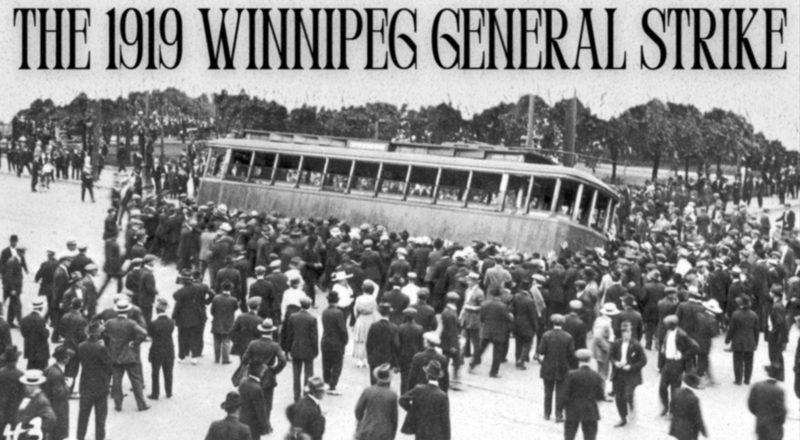
/ Blog
May 31, 2019
The 1919 Winnipeg General Strike: Veterans Protest With and Against the Strike
As 2019 marks the 100th anniversary of the 1919 Winnipeg General Strike, Heritage Winnipeg is commemorating the year by looking back at the events during this tumultuous period of history that helped shape our city. This article is part of a series of guest posts reflecting on the some of the places that bore witness to the Strike and the events leading up to it. Read all the blogs in this series from the beginning:
Walker Theatre Meeting Sets the Stage
Population Growth and the Canadian Pacific Railway Station
The Western Labour Conference in Calgary
Breaking Point – Contract Negotiations Stall
The Strike Shuts Down Winnipeg
Veterans Protest With and Against the Strike
Specials and Strikers Riot
Raids and Arrests
Bloody Saturday
Russell Sedition Trial
At the time, thousands of men who fought in the First World War were returning to Canada. These former soldiers returned with expectations of getting back to work and enjoying the democracy and freedoms they fought for. Many of the veterans immediately empathized with the issues raised by the strike and openly supported the strikers.
Some of the veterans objected to the Strike as they believed immigrants were taking their jobs and were contributing to the economic problems of the city. Others had strong working class roots, experienced the poor living conditions of the north end of the city and saw common purpose with the strikers’ demands. An estimated 4-5,000 veterans came out to support the Strike (some estimates were higher).
On June 4th a crowd of veterans who were opposed to the Strike marched onto City Hall. They held signs attacking immigrants and called on the government to protect the city from ‘Bolsheviks’ (a reference to those who supported the Russian revolution). Pro-strike veterans met at Victoria Park. City officials and the police were concerned about an open conflict between the two veterans groups and they maneuvered the factions to avoid crossing paths.
Veterans openly marched to demand attention to their situation and needs. They confronted Premier Tobias Norris on May 31st when they marched to the Manitoba Legislative Building on Broadway. They were demanding jobs and that businesses respect collective bargaining with unions. A large number of veterans managed to enter the building, while about 5,000 more stood outside. Premier Norris advised the veterans to remain calm and patient. Then men marched to City Hall to meet with Mayor Charles Gray who gave the soldiers similar advice – keep out of the fight and stay calm.
Two days later, another parade formed. This time they marched along Portage Avenue to the Legislative Building and once again met with Premier Norris, but with the same unsatisfactory result as their previous meeting. A delegation also met with the Mayor of St. Boniface who agreed to remove scabs doing the work of civic employees. They returned to Victoria Park, to hear Roger Bray, who became a spokesman for the returned soldiers who supported the Strike. The parades became more and more boisterous, larger and directed at government.
THANK YOU TO THE SPONSOR OF THIS BLOG POST:

Guest post written by Dennis Lewycky.
Edited by Heritage Winnipeg.











